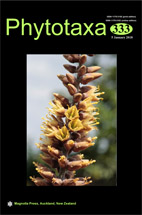Abstract
In the last decade there was a remarkable progress in karyological analyses among members of Allium Linnaeus (1753: 294) subg. Melanocrommyum (Webb & Berthelot 1848: 347) Rouy (1910: 378) (Gurushidze et al. 2012, Genç et al. 2013, Akhavan et al. 2015, Genç & Firat 2016, Fritsch 2016), confirming that most species are diploid based on x = 8 (x = 9 and x = 10 are only rare exceptions, Fritsch & Astanova 1998). Triploid plants were rarely found in some members of A. sect. Melanocrommyum Webb & Berthel. (Tzanoudakis 1999, Genç & Özhatay 2014). The tetraploid level was repeatedly reported by several authors for A. cyrilli Tenore (1827: 364) and sporadically for some other species, but higher ploidy levels were only exceptionally reported: 2n = 48 for A. cyrilli by Khoshoo et al. (1966) and for A. giganteum Regel (1883: 97) by Mensinkai (1939), and even 2n = 64 for A. monophyllum Vved. in Czerniakowska (1930: 266) by Kurita (1956). Unfortunately, these hexa- and octoploid counts were based on plants from botanical collections, and the taxonomic identity cannot be proofed because herbarium vouchers of these counts are not known to exist.

